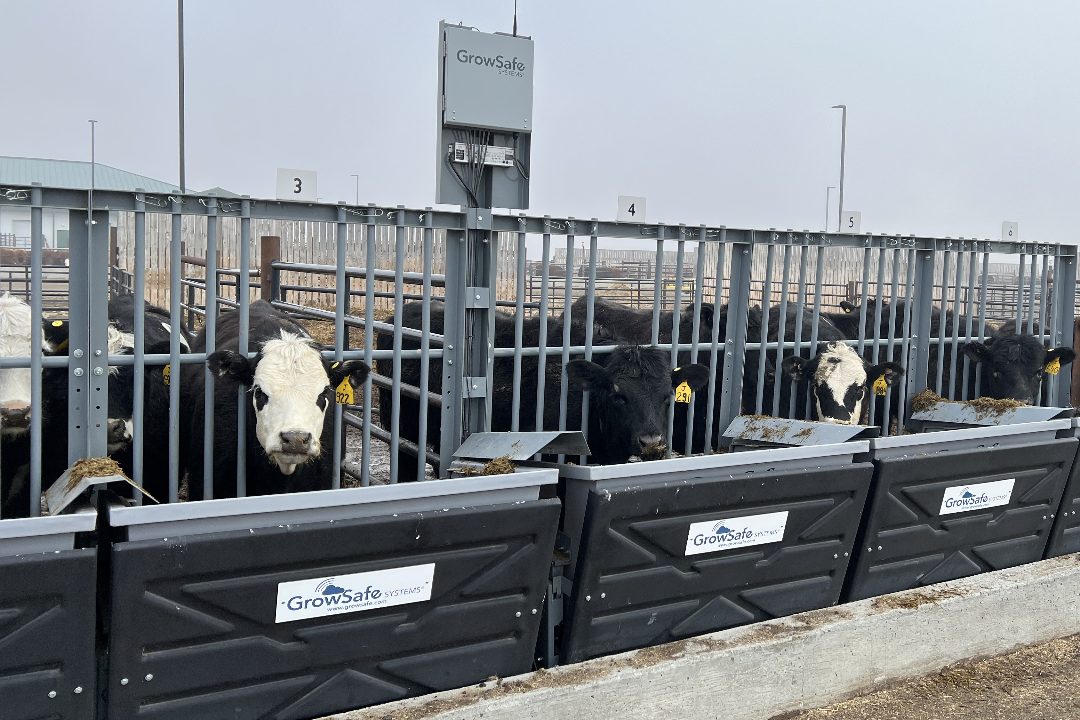Science
USask Study Reveals Key Insights on Bovine Digestion Efficiency

Research from the University of Saskatchewan (USask) has uncovered significant insights into bovine digestion, highlighting the variability in fiber digestion among cattle. Dr. Gabriel Ribeiro, an associate professor in the College of Agriculture and Bioresources, along with master’s student Megan Dubois, presented their findings at the 2025 American Society of Animal Science – Canadian Society of Animal Science Annual Meeting in Hollywood, Florida.
The study, conducted with a group of 64 black Angus crossbred heifers, aimed to explore why some cows exhibit greater efficiency in digesting fiber compared to others. Ribeiro observed considerable differences in feed efficiency during earlier research and sought to understand the physiological and microbiological factors at play.
Initially, Ribeiro and Dubois focused on the animals’ ability to digest fiber, specifically within low-quality and high-forage diets. They later expanded their scope to address societal concerns about the environmental impact of beef cattle, especially regarding methane emissions.
Contrary to their initial expectations, the researchers discovered that heifers with higher digestible-fiber intake exhibited better feed efficiency without producing increased methane levels. “We were quite surprised at that,” Ribeiro said, noting that the total enteric methane produced per day was consistent across both groups. However, when considering the methane emitted per kilogram of feed digested, the more efficient animals produced less.
The study began with heifers selected from the same herd to minimize variation. Ribeiro and Dubois identified the top eight heifers for their superior fiber digesting capabilities, as well as the bottom eight. The research was conducted at the USask Livestock and Forage Centre of Excellence.
Dubois found that the top-performing heifers consumed more feed and gained weight more rapidly. “We have some ideas about why this is happening,” Ribeiro explained. Although minor changes in the rumen microbiome were observed, they were not drastic. The research team also noted that the more efficient animals spent more time ruminating, which helped break down fiber and facilitated microbial digestion.
Looking ahead, the researchers plan to investigate whether these findings hold true when heifers are fed diets with higher grain content. Ribeiro emphasized the need to understand the relationship between chewing behavior and fiber digestion efficiency, suggesting that increased chewing may lead to faster passage through the digestive system, reducing methane production opportunities.
Funding for this research was provided by the Natural Sciences and Engineering Research Council of Canada (NSERC), the Beef Cattle Research Council (BCRC), Alberta Beef Producers (ABP), and the Saskatchewan Cattle Association (SCA). Dubois is currently preparing her master’s thesis and plans to pursue a PhD, aiming to connect the observed efficiencies with genetic factors in a larger sample size.
Ribeiro highlighted the potential for future work, referencing a recent meta-analysis from Europe that supports their findings. He aims to delve deeper into the genetics behind the heifer phenotype, collaborating with other experts, including geneticists and microbiologists from USask and Agriculture and Agri-Food Canada.
“We’re trying to find an easy way to identify those animals,” Ribeiro stated, suggesting that advancements could lead to DNA testing methods for producers to select for desirable traits. Ultimately, this research may lead to more profitable cattle production with reduced environmental impact. By identifying heifers that efficiently digest fiber, producers could achieve heavier cattle at a lower cost and with diminished methane emissions, potentially transforming herd management practices in the beef industry.
-

 Science2 months ago
Science2 months agoToyoake City Proposes Daily Two-Hour Smartphone Use Limit
-

 Health2 months ago
Health2 months agoB.C. Review Reveals Urgent Need for Rare-Disease Drug Reforms
-

 Top Stories2 months ago
Top Stories2 months agoPedestrian Fatally Injured in Esquimalt Collision on August 14
-

 Technology2 months ago
Technology2 months agoDark Adventure Game “Bye Sweet Carole” Set for October Release
-

 World2 months ago
World2 months agoJimmy Lai’s Defense Challenges Charges Under National Security Law
-

 Technology2 months ago
Technology2 months agoKonami Revives Iconic Metal Gear Solid Delta Ahead of Release
-

 Technology2 months ago
Technology2 months agoSnapmaker U1 Color 3D Printer Redefines Speed and Sustainability
-

 Technology2 months ago
Technology2 months agoAION Folding Knife: Redefining EDC Design with Premium Materials
-

 Technology2 months ago
Technology2 months agoSolve Today’s Wordle Challenge: Hints and Answer for August 19
-

 Business2 months ago
Business2 months agoGordon Murray Automotive Unveils S1 LM and Le Mans GTR at Monterey
-

 Lifestyle2 months ago
Lifestyle2 months agoVictoria’s Pop-Up Shop Shines Light on B.C.’s Wolf Cull
-

 Technology2 months ago
Technology2 months agoApple Expands Self-Service Repair Program to Canada









